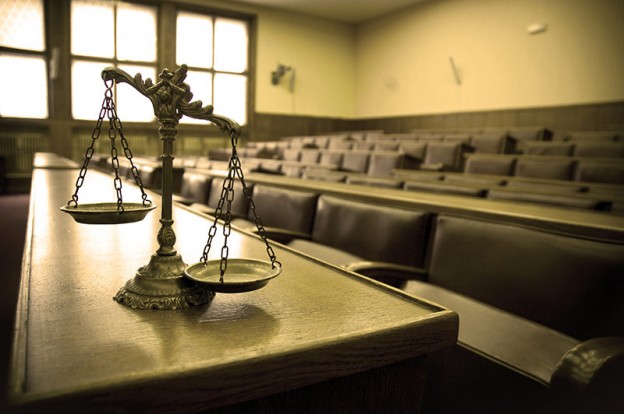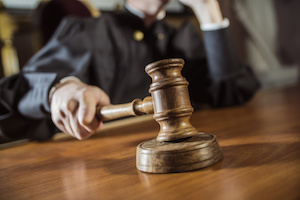After being diagnosed with a pelvic organ prolapse, Charlotte Salinero elected to have an abdominal sacrocolpopexy, a procedure that uses a graft to support the top of the vagina. The surgery was performed by Dr. Jaime Sepulveda in 2012.
While the patient’s own tissue can be used as a graft, it is common to perform the procedure using a synthetic mesh. In 2011, the FDA warned that “serious complications associated with surgical mesh for transvaginal repair of [pelvic organ prolapse] are not rare.”
The warning advised physicians that “it is not clear that transvaginal [pelvic organ prolapse] repair with mesh is more effective than traditional non-mesh repair . . . and it may expose patients to greater risk.” Complications typically arise when the mesh erodes, leading to pain, infection, bleeding, and other health concerns.
Dr. Sepulveda elected to implant Artisyn Y-Mesh, a product made by Ethicon, a subsidiary of Johnson & Johnson. Dr. Sepulveda discussed surgical risks with Salinero but did not disclose or discuss his decision to choose Artisyn Y-Mesh as the material he would use for the graft.
Surgical mesh materials can lead to adhesions that cause organs and tissues to stick together. A few years after her surgery, Salinero developed a rectovaginal vesical fistula, a condition that occurs when the rectum or bladder becomes connected to the vagina.
Dr. Sepulveda removed the implant and separated the adhesion of Salinero’s bladder and rectum. Dr. Sepulveda was able to remove the mesh in one piece, apart from two small segments that he subsequently removed. Salinero continued to experience debilitating complications after the surgery that she attributed to the Artisyn Y-Mesh.
Florida’s Learned Intermediary Defense
Salinero sued Ethicon, alleging that a polypropylene mesh is “biologically incompatible with human tissue and promotes an immune response in a large subset of the population.” Among her other claims, Salinero alleged that the Artisyn Y-Mesh “Instructions for Use” did not adequately warn of the risks associated with the implant.
The lawsuit was filed in a federal court in Florida. The court applied Florida law regarding the duty to warn patients of risks associated with a medical device. Under Florida law, a medical device manufacturer only has a duty to warn the physician who chooses the device, not the patient who receives it. The physician is regarded as a “learned intermediary” between the manufacturer and the patient.
As a learned intermediary, the physician weighs the risks and benefits of a particular medical device when deciding whether to recommend it for the patient’s needs. To bring a successful failure to warn claim against a manufacturer, the patient must prove that the physician would not have chosen the device if the physician had been adequately warned.
The court granted summary judgment in Ethicon’s favor because Dr. Sepulveda testified in a deposition that he was fully apprised of the risks associated with the Artisyn Y-Mesh, that he believed his decision to use the Artisyn Y-Mesh was appropriate even in hindsight, that his implantation of the Artisyn Y-Mesh was the best option, and that he would do it again. That deposition testimony made it impossible for Salerno to establish that Dr. Sepulveda would not have implanted Artisyn Y-Mesh if he had been given any additional information about the risks associated with the product.
Learned Intermediaries Who Act as Expert Witnesses
Salerno appealed. Salerno argued that the “learned intermediary” rule assumes that doctors are objective evaluators of medical evidence who put the interests of their patients ahead of the interests of medical device manufacturers. In their view, Dr. Sepulveda did not qualify as a learned intermediary.
For decades, Dr. Sepulveda has had a financial relationship with Johnson & Johnson, the parent company of Ethicon. In addition to being paid as a consultant on product evaluations and mesh trials, he has served as an expert witness for Johnson & Johnson in more than twenty cases. Over the years, Johnson & Johnson has paid Dr. Sepulveda more than $2 million.
Given that financial relationship, it would be reasonable to question whether Dr. Sepulveda would act as an objective intermediary when deciding whether to recommend a Johnson & Johnson product to a patient. Testifying that he would have recommended a different product if the warning had been adequate might have placed a lucrative income stream at risk.
Given his financial interest, a jury might question Dr. Sepulveda’s credibility when he testified that he received adequate warnings and that he would have performed the procedure using the same mesh if the warning had been more complete. A doctor who is paid millions of dollars by a company might be satisfied with inadequate warnings while a doctor with no financial incentive to support the company might testify differently.
The “learned intermediary” doctrine may work to the disadvantage of patients who retain doctors who worked as expert witnesses for medical device manufacturers. Salerno accordingly argued that a physician who is paid for expert testimony by a company cannot stand as a learned intermediary between the company and an injured patient.
No “Financial Interest” Exception
The Court of Appeals for the Eleventh Circuit affirmed the summary judgment. The federal court noted that Florida courts have not been asked to recognize a “financial bias exception” to the learned intermediary rule. When a state court has not decided a controlling question of state law, federal courts usually try to decide how the state court would decide the issue.
Federal courts in other states have declined to apply the learned intermediary doctrine when there is evidence that the intermediary might be biased. Others require evidence of actual bias. The Eleventh Circuit declined to follow those decisions on the ground that the Florida Supreme Court would probably reject them. The evidence of how the Florida Supreme Court would decide the issue is nevertheless slim.
In a different context, the Florida Supreme Court decided that the learned intermediary defense does not apply when the manufacturer “provides an incentive to the intermediary to withhold the necessary information from the consumer.” In the Eleventh Circuit’s view, paying a doctor to act as an expert witness more than twenty time does not provide an incentive to the doctor to look the other way when warnings about a medical device might be inadequate. A jury might think otherwise.
Regardless of how a jury might view the credibility of a doctor who earsns significant income testifying as an expert for a medical device manufacturer, the court of appeals essentially held that all doctors can be trusted to do what’s right. Since the Florida Supreme Court has not decided the precise issue before the court, the Eleventh Circuit declined to adopt an exception to the learned intermediary doctrine that Florida courts have not adopted.













